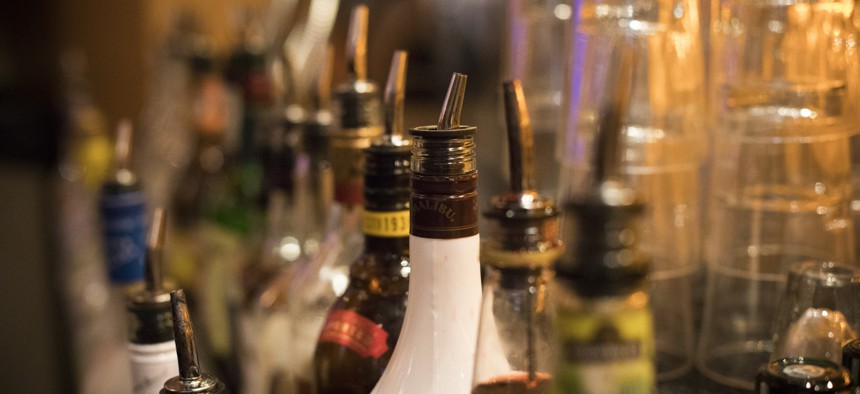Binge Drinkers Are Drinking More Alcohol in Nine States, CDC Says

This Dec. 25, 2018, photo shows Malibu rum and other alcohols at the Back Bowl bowling alley in Eagle, Colo. AP Photo/Jenny Kane
Fewer Americans are binge drinking, but consumption among those who do is on the rise.
Fewer Americans are binge drinking, but those who do are drinking significantly more, according to new data from the Centers for Disease Control and Prevention.
Binge drinkers gulped down 57 more drinks per year in 2017 than they did in 2011, consuming 529 drinks annually in 2017, according to data released this month by the CDC.
The portion of Americans who reported binge drinking decreased during that five-year period, from 18.9% in 2011 to 18.0% in 2017. But nine states reported increases in the total number of binge drinks consumed by residents.
Significant increases in the amount of alcohol consumed were reported in Idaho, Indiana, Maine, Montana, New Jersey, New York, North Dakota, Ohio, and Virginia. The biggest jump in consumption was in Idaho, where the average number of drinks consumed each year increased from 433 in 2011 to 793 in 2017. Massachusetts and West Virginia reported significant decreases in binge drinking over that time.
The report identified Wyoming binge drinkers as consuming the most alcohol, drinking 1,219 drinks a year in 2017. The CDC did not include the state among those with a significant increase in the number of drinks consumed by binge drinkers.
Wyoming health department authorities disputed the findings about the amount of alcohol residents drank, saying they believe errors in data collection and reporting affected the results.
“That said, we do acknowledge that binge drinking remains a concern in Wyoming as in many other states,” said Kim Deti, a spokeswoman for the Wyoming Department of Health. “We have an effort where prevention dollars are distributed to various entities in each county to address their priority issues including alcohol misuse, suicide and the misuse of other drugs.”
The CDC report used data from Behavioral Risk Factor Surveillance System, which relies on self-reporting and likely underestimates alcohol consumption, according to the agency.
Binge drinking, which is defined as consuming five or more drinks in one sitting for men and four or more drinks in one sitting for women, has long been identified as a concern in the upper Midwest, where residents reported drinking excessively out of boredom. Excessive drinking has been linked to health issues and also losses in workplace productivity.
A University of Wisconsin study of the costs of binge drinking in Wisconsin found that the state collected $60.8 million in alcohol taxes in 2018, but estimated the lost economic cost of excessive drinking cost the state $3.9 billion each year. The biggest factor in the economic losses was the loss of productivity due to excessive drinking, the study found.
Nationwide, Americans reported binge drinking more frequently, 4.6 times in the last 30 days in 2017 compared to 4.2 times in 2011. The number of drinks consumed remained about even, with American consuming an average of 7.1 drinks during a binge, the CDC report found.
The CDC report indicates that states could use the data to learn more about other factors that could contribute to binge drinking and use that information in public health campaigns. For instance, the report noted that “the majority of persons reporting prescription opioid misuse also are adults who reported binge drinking.”
“For example, persons living in states with more restrictive alcohol policies are also less likely to binge drink and experience alcohol-attributable harms, including motor vehicle crash deaths, alcoholic liver cirrhosis, and alcohol-involved homicides and suicides than are persons living in states with less restrictive alcohol policies,” the report notes.
Andrea Noble is a staff correspondent with Route Fifty.
NEXT STORY: States Sue Trump Administration Over 3D-Printed Gun Regulations





